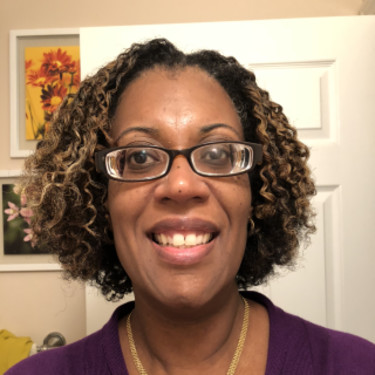I can’t say that I wasn’t warned. It was 2017 and I was the CEO of a 6-physician pediatric practice. We were doing fine, but quality incentive dollars formed at least half of our annual revenue. We were behind on our latest Patient Centered Medical Home (PCMH) recertification and at risk of not making payroll. I was sitting in my own doctor’s office, following up on stress-related health issues, when I saw a parent who worked there as a medical assistant. “We’re on the same EHR as you,” she said cheerily. The “we” in this context was a local 60-plus physician multispecialty group. Her comments made me wonder whether that organization would be interested in acquiring a pediatric practice.
They had a reputation for allowing their member practices to maintain more independence than the hospital and private equity monoliths surrounding us. We could continue to run our practice much like we always had, though we would have to cede a certain percentage of our revenue to common costs. In return, however, we would gain economy of scale benefits in both increased payments and decreased expenses. Plus, they had in-house human resources, billing, and laboratory services.
As the hospital systems scooped up local obstetric groups, our referral base for new babies diminished. We dealt with the ebb and flow of circulating illness and the growth of urgent care centers. On the income side, our payments from private insurers had stagnated and, as a small group in a saturated market, we didn’t care for enough member-lives to leverage for increases. We did, however, win on quality metrics and between PCMH and other incentive programs, we managed to remain profitable. But would that be sustainable?
We saw several benefits that we would glean from joining this group, primarily through insurance company contracts. If an insurer paid them 2-3 times what we were getting paid for a given CPT code, we could increase our profitability without having to see more patients. Billing was not outsourced to a faceless subcontractor, so we could continue to have an eye on making sure the pediatric-specific nuances were recognized and paid.
Plus, I was particularly excited about the marketing and human resource support that the organization would provide. Between the financial cost and the knowledge base required in both these areas, the support of structured departments would help us to attract both patients and staff. Group purchasing agreements would save us money on all the supplies needed to keep our offices running smoothly. All this without having to learn a new EHR? How could things go wrong?
“Don’t do it,” said my friends in pediatric leadership. Pediatrics notoriously gets lost in the multispecialty space. Children are not small adults and pediatrics is a completely different animal than adult medicine. They urged me to reconsider, listing several pediatric supergroups that would be better options. My partners and I investigated those options, but I really can’t emphasize enough the appeal of not learning a new EHR. That, plus the allure of continued self-determination, led us to join this multispecialty group in 2018.
You’ve figured out by now that this venture did not go well. The economics of private medical practice are no different than any other small business. Low overhead plus high income equals profit. The variables that contribute to this equation are where my group faced challenges. We paid exorbitant rent on two of our three offices. We had trouble recruiting staff because large health systems could pay higher wages. The cost of everything from toilet paper to printer cartridges rose steadily every year. And, in pediatrics, you can never forget the cost of vaccines.
Unfortunately, I believe that this organization had no idea what they were getting into by taking on a pediatric practice, particularly a practice with our demographic profile. Our patients were a mix of families with both Medicaid and private insurance. The size of their group ensured that private insurers paid them far more than a small practice like ours. Medicaid, however, doesn’t pay well no matter how big you are.
In early 2017, our financial statements were deceptively lush because there was a brief (and beautiful) period when the Affordable Care Act allowed Medicaid clinicians to be paid Medicare rates. We shared this information when they reviewed our financial statements, but time would show that they did not appreciate the long-term significance. Only patient volume and strategic business practices would sustain us, and we would soon no longer have either.
It got worse. Over the last six years, a global pandemic knocked us off our feet, we lost two of our most popular doctors, and the “Great Resignation” decimated our clinical staff. We did benefit somewhat from COVID-era rebuilding funds, but not enough to account for our true losses. If our practice had stayed independent, we might have closed shop and gone our separate ways. Instead, we were locked in by our restrictive covenants and forced to fight uphill.
Our uphill battle was mostly waged against a lack of fiscal transparency when it came to assessing our income and expenses. We know that income is driven by patient visits, so if you don’t see patients, you don’t have money. My staff worked hard on patient recalls, but it was difficult to maintain availability without staff. Furthermore, you can’t get paid appropriately for those visits without effective revenue cycle practices. This requires not only an understanding of pediatric billing, but also a willingness to follow through when insurance companies refuse to pay. Our overhead skyrocketed because we were no longer affiliated with a vaccine purchasing group to help offset the costs. My administrator and I no longer had access to either the data or the means to correct problems.
In 2023, the organization decided that they needed to offload pediatrics to stop racking up this debt. Through pure obstinance, I was able to get them into negotiations with a large regional multispecialty organization. It took a few months of review and wrangling, but we are finally leaving for a pediatric-only health care space. There is no guarantee that this will be a profitable transition, but the months-long onboarding process has shown me how the process can be better.
Pediatric health care, from the families to the financing, might be too different from adult-driven health care to operate within the same organizational structure. At minimum, the leadership of that parent organization needs to both understand and respect how a pediatric practice functions. The political, social, and market forces that impact profitability in pediatric care are complex. Pediatric clinicians also need to educate themselves on how to be successful within their own health care market.
Even in my health care saturated area, there are independent pediatricians, family practitioners, and internists. Physicians can’t talk about what they get paid by insurance companies, but there are many ways to provide quality care in today’s health care environment. Newer payment models, like direct to patient or concierge services, are gaining popularity. Alternative and complementary medicine services appeal to many families. Practices that serve mostly Medicaid patients can apply as federally qualified health centers to earn more money for providing indigent care.
As for my practice, we will likely never be truly independent again. Most of my colleagues are nearing retirement age. Families are steadily moving out of our area in search of affordable housing and better jobs. It will take strong leadership to grow and thrive again, but I’m ready for the challenge. Joining this pediatric multispecialty group will give us the best opportunity to continue to serve the health of a community where we all live, work, and raise our families.
What's your experience with multispecialty groups and independent practice? Share in the comments.
Dr. Kimberly Clare is a pediatrician in Poughkeepsie, NY. She enjoys reading, crochet and the New York Times Sunday crossword but her real passion is karate (black belt in Tang Soo Do). Dr. Clare is a 2023–2024 Doximity Op-Med Fellow.
Image by Luciano Lozano / Getty







